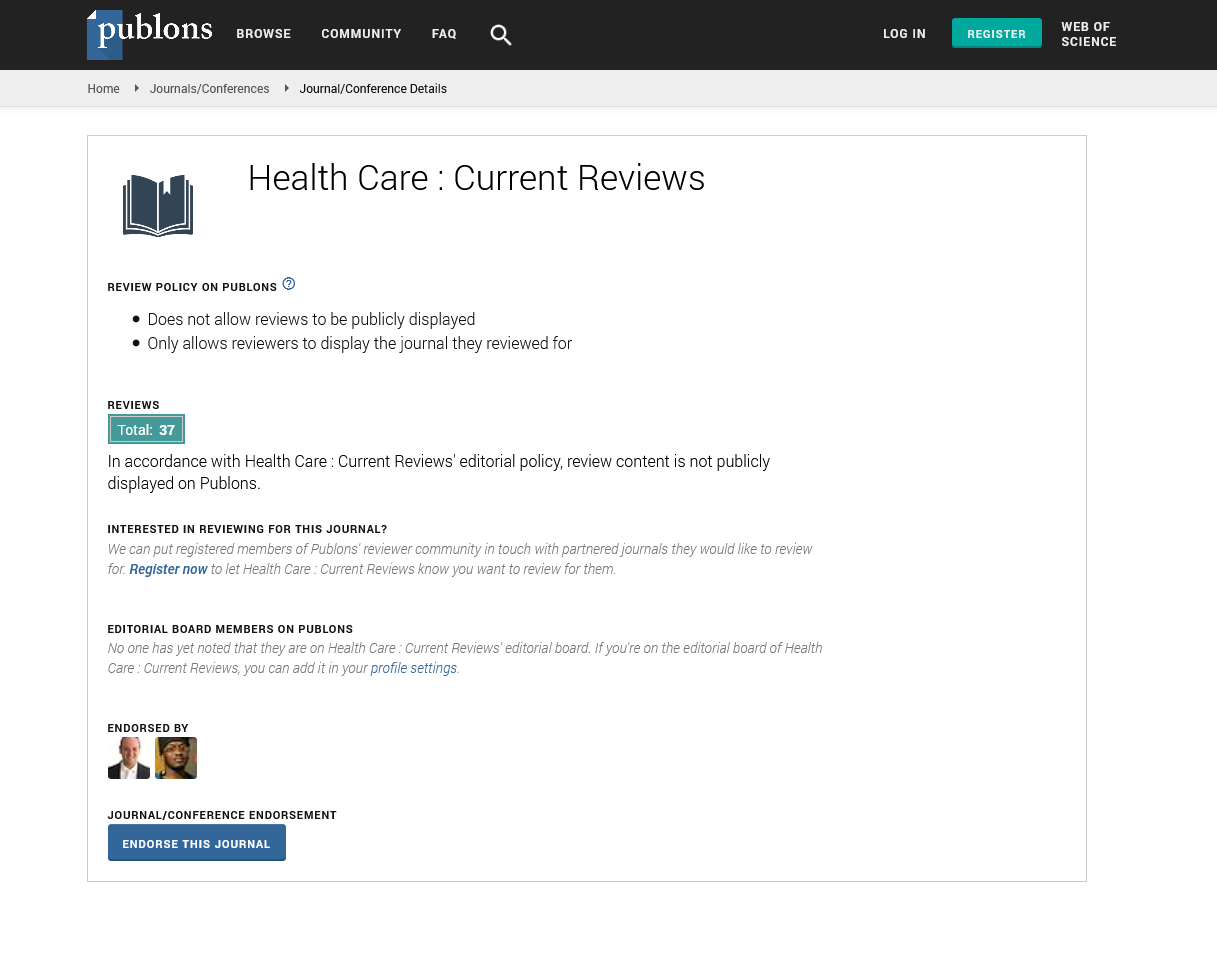Indexed In
- Open J Gate
- Academic Keys
- RefSeek
- Hamdard University
- EBSCO A-Z
- Publons
- Geneva Foundation for Medical Education and Research
- Google Scholar
Useful Links
Share This Page
Journal Flyer

Open Access Journals
- Agri and Aquaculture
- Biochemistry
- Bioinformatics & Systems Biology
- Business & Management
- Chemistry
- Clinical Sciences
- Engineering
- Food & Nutrition
- General Science
- Genetics & Molecular Biology
- Immunology & Microbiology
- Medical Sciences
- Neuroscience & Psychology
- Nursing & Health Care
- Pharmaceutical Sciences
Treatment adherence status and its associated factors among adult HIVpositive Patients of Appointment Spacing Model (ASM) users and non-users in Northwest Ethiopia: A comparative cross-sectional study
35th Global Healthcare Summit
January 27-28, 2025 Webinar
Ejigu Gebeye*, Addisu Adgolign and Fantahun Ayenew
University of Gondar, Ethiopia
Scientific Tracks Abstracts: Health Care Curr Re
Abstract:
Background: Assuring of whether HIV patients are adhering to their medication is difficult. Non-adherent to medication is a public health problem in developing countries. However, treatment adherence status for differentiated service delivery model is little studied typically adherence difference between ASM users and non-users is not studied in Ethiopia. Objective: The study aimed to assess adherence status and associated factors among adult HIV-positive patients of ASM users and non-users in northwest Ethiopia. Methods: A comparative cross-sectional study was conducted from November 2023 to January, 2024 in north Gondar zone. A total sample of 601 was selected by simple random sampling. Data were entered into Epi-Data v4.6 and analyzed using STATA v14. A multivariable logistic regression model was used. Associations between outcome and predictor variables were measured using AOR with 95% CI and p-value ≤0.05 were considered as statistically significant. Results: The total respondent were 601 (300 ASM users and 301 non users) with 97.25% response rate. Treatment adherence status was 81.33% [95%CI, 76.49%–85.37%] for ASM users and 76.41% [95%CI, 71.25%–80.89%] for ASM non users. Family size [AOR=0.45, 95%CI 0.22–0.91], education status [AOR=3.62, 95%CI 1.13–11.62], ART duration [AOR=2.16, 95%CI 1.06–4.41], drug time [AOR=3.91, 95%CI (1.73–8.82] and chronic disease comorbidity [AOR=0.27, 95%CI 0.11–0.64] were associated with adherence among ASM users. While ASM non-user’s adherence were associated with cost [AOR=0.28, 95%CI 0.10–0.84], distance [AOR=0.34, 95%CI 0.13–0.86], partner HIV status [AOR=2.73, 95%CI 1.17–6.35] and alcohol drinking status [AOR=0.21, 95%CI 0.06–0.78]. Fixed medication time [AOR=3.40 95%CI; 1.51–7.63], ART duration [AOR=2.07 95%CI; 1.03– 4.14], family size [AOR=0.44 95%CI 0.23–0.88] and medical problems [AOR=0.32 95%CI 0.13–0.81] were associated with adherence of ASM users and non-users. Conclusion: Point estimate ASM user’s adherence status was higher than non-users. Factors of ASM user were family size, ART duration, education, chronic disease comorbidity and drug time. Whereas for ASM non users were distance, partner HIV status, cost and alcohol use. Keywords: Adult HIV patients, ART adherence, appointment spacing model, Ethiopia
Biography :
Ejigu Gebeye is a dedicated researcher and academic affiliated with the University of Gondar, Ethiopia. He has also actively participated in conferences, workshops, collaborative research initiatives at both national and international levels. Ejigu Gebeye continues to engage in innovative research and academic mentorship, aiming to make a lasting impact in his field.

